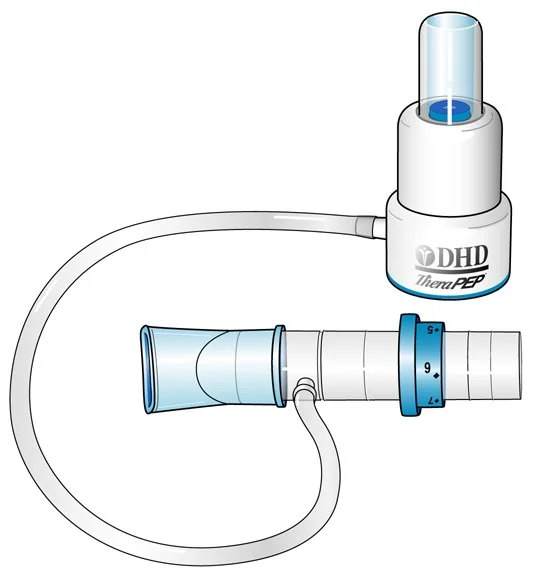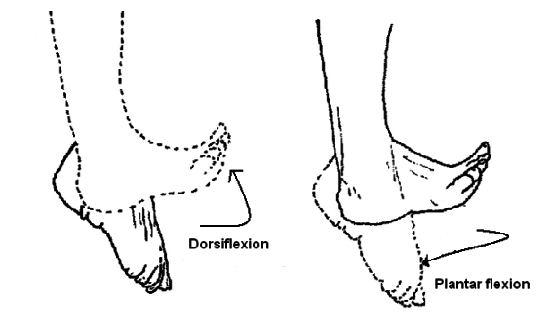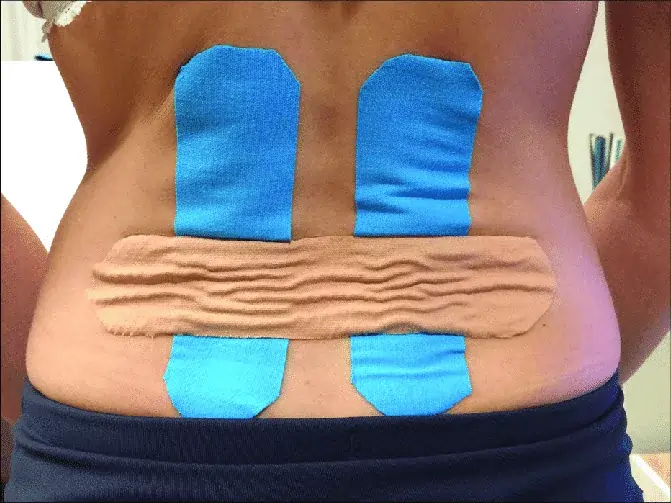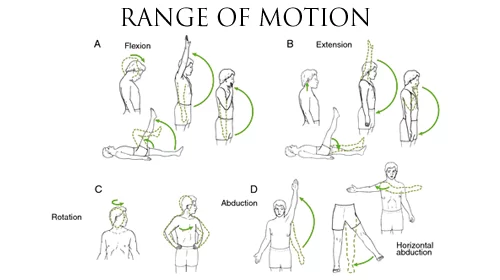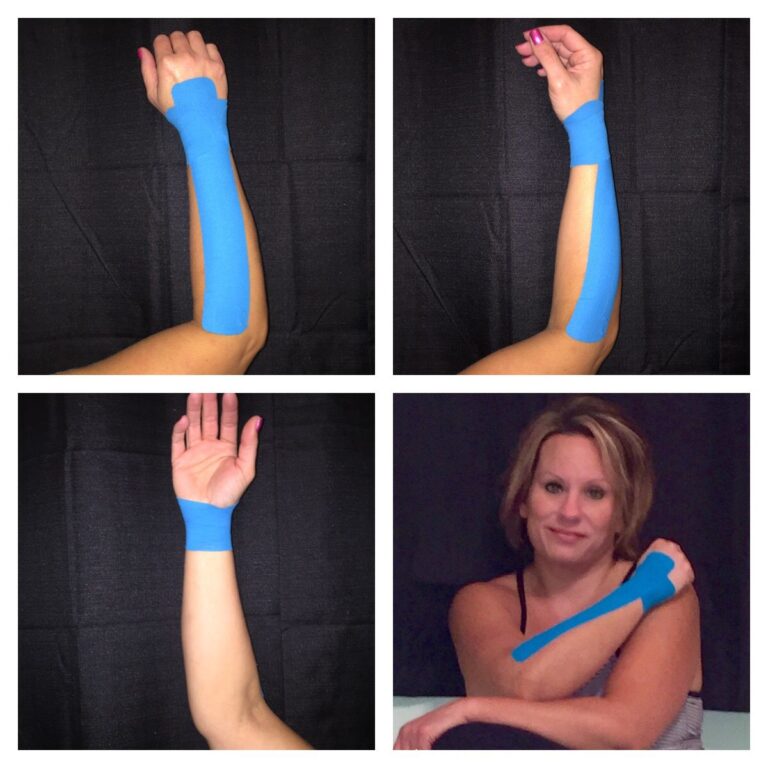Positive Expiratory pressure technique (PEP)
- One of the most frequently prescribed airway clearance therapy (ACT) options for patients with chronic lung conditions or reduced lung volumes are positive expiratory pressure therapy (PEP) devices.
- During positive expiratory pressure therapy (PEP), the patient exhales against a fixed-orifice resistor, generating pressures during expiration that usually range from 10 to 20 cm H2O. Positive expiratory pressure therapy (PEP) does not require a pressurized external gas source.
The therapy, which is administered by breathing through a special device assists:
- Air gets behind the mucus,
- Move mucus from lung and airway walls,
- To hold the airways open for longer.
- The increased geriatric population coupled with higher incidences of chronic conditions drives the positive expiratory pressure therapy (PEP) devices market growth.
- The improving prevalence of chronic obstructive pulmonary disease (COPD) along with asthma is one of the major driving factors for the industry.
- eg. according to CDC (the Centres for Disease Control and Prevention), in 2018, around nine million adults were diagnosed with chronic bronchitis which eventually leads to higher requirements for positive expiratory pressure therapy (PEP) devices, fueling the market.
- This page takes a look at some of the latest positive expiratory pressure therapy (PEP) devices available on the market.
Table of Contents
Mechanism of positive expiratory pressure therapy (PEP)
- The improvement in pressure is transmitted to airways creating back pressure and stenting them during exhalation, preventing premature airway closure, and reducing gas trapping.
- Promotes collateral ventilation, allowing pressure to build up distant to the obstruction (collateral ventilation is a phenomenon found in the human lungs where alveolar structures are ventilated through channels that bypass normal airways).
- Keeps airways from collapsing and prolongs expiratory flow
- Effective airway clearance promotes the movement of mucus proximally.
Types of positive expiratory pressure therapy (PEP)
Two (2) types of airway clearance devices are the positive expiratory pressure device (PEP) and the oscillating positive pressure device.
- A positive expiratory pressure (PEP) device increases resistance to expiratory airflow to promote mucus clearance by preventing airway closure and increasing collateral ventilation.
Examples of this type of device include the Thera positive expiratory pressure (PEP), Resistex positive expiratory pressure (PEP) Mask, and the Pari RC Cornet Mucus Clearing DeviceTM.
- An oscillating (or vibratory) positive expiratory pressure (OscPEP) device is a form of positive expiratory pressure (PEP) that combines high-frequency air flow oscillations with positive expiratory. The person blares all the way out many times through a device. Commonly known by their brand names, these types of oscillating positive expiratory pressure (PEP) devices work in two ways.
They use resistance to make it more difficult during the breath out, like non-oscillating positive expiratory pressure (PEP) devices.
Also, make vibrations when a patient breathes out. The vibrations move mucus from the surface of the airways. Later blowing through the device several times, the person will huff and cough to clear the mucus from the lungs.
Indications for positive expiratory pressure (PEP)
- Acute and chronic respiratory failure (RF) for reasons of surgery
- Neurological or musculoskeletal dysfunction ex. MND
- Old age and immobility
- To improve lung volume by increasing FRC and VT
- Reduce hyperinflation / Air trapping in eg: emphysema, bronchitis, asthma
- Improve airway clearance in; cystic fibrosis (over 4 y.o); chronic bronchitis; bronchiectasis; bronchiolitis obliterans
- To maximize the delivery of bronchodilators in patients receiving bronchial hygiene therapy
- Relative Contraindications for positive expiratory pressure (PEP)
- Untreated pneumothorax
- Intracranial pressure > 20mm Hg
- Active hemoptysis
- Immediate trauma or surgery to the skull, face, mouth, or esophagus
- Patient with an acute asthma attack or acute worsening of Chronic Obstructive Pulmonary Disease (COPD) unable to tolerate increased work of breathing
- Acute sinusitis or epistaxis
- Tympanic membrane rupture or another known or suspected inner ear pathology
- Nausea
- There are no absolute contraindications to positive expiratory pressure (PEP) that have been noted by the literature.
Physiology of positive expiratory pressure (PEP)
- Increasing lung volume FRC and VT
A progressively temporary increase in FRC has been found to be proportionally correlated when increasing positive expiratory pressure (PEP).
An increase in FRC is attained by the alteration of a breathing pattern that is a product of a decrease in expiratory flow and an increase in the expiratory time leading to the exhalation of smaller volumes.
the lung volume increase is achieved by altering breathing patterns, thereby increasing VT and decreasing respiratory frequency, which is due to an increase in muscle activity of inspiratory and expiratory muscles.
Increased gas exchange is a result of breathing during a prolonged period with normalized lung volumes. - Reduction of hyperinflation
Hyperinflation is a result of air entrapment causing the lungs to overinflate. It is caused by muscle spasms, mucosal inflammation, hyper-secretions, and reduced lung elasticity due to the destruction of lung parenchyma. If Untreated may conduct to inspiratory muscle exhaustion, decreased ventilation, and deficient gas exchange.
positive expiratory pressure (PEP) reduces expiratory flow, which in return decreases the declining pressure across the airway wall thereby reducing collapse.
Increasing pressure within airways transports EPP centrally and in stable airways, therefore, stenting them. Reduction of airway collapse increases expired volume leading to additional emptying of lung volume thus lowering FRC and increasing ventilation distribution and gas exchange. - Airway Clearance
When using Hi positive expiratory pressure (PEP)
- It homogenously mobilizes secretions in collapsed airways. It aims towards increasing FRC by recruiting collapsed lung volumes and uses resistance to acquire progressive homogenization emptying of the lungs.
- Homogenization is achieved by the facilitation of EPP to move peripherally during expiration keeping away collapsed airways, trapped gas, and atelectasis. This results in the reduction of respiratory flow and an increase in expiratory flow combined with an increase in FRC. In doing so secretion is mobilized in closed or collapsed and unreachable areas of the lungs. Hi positive expiratory pressure (PEP) is proven to be an airway clearance technique equally or more effective than positive expiratory pressure (PEP).
When using Osc positive expiratory pressure (PEP)
- The oscillating property is reached by bursts and turbulent expiratory airflow due to the opening and closing of the valve. Oscillations during expiration decrease the viscoelasticity properties of mucus, affecting its movement which depends on the oscillating frequency. Osc positive expiratory pressure (PEP) is equally as effective as other Airway Clearance Techniques (ACT) PEP and Active Cycle Breathing Technique (ACBT).
Different PEP devices
- Osc positive expiratory pressure (PEP) – applied with a threshold-dependent mechanism with a high-density steel “movable ball” that is interposed on a funnel or circular cone between the exhalation region of the device causing a vibration that is transmitted to the lungs, examples are:
Aerobika Oscillating positive expiratory pressure (OPEP) – Monaghan Medical’s Aerobika oscillating positive expiratory pressure (OPEP) device assists mucociliary clearance and helps prevent COPD progression, according to the company.
Flutter – The Flutter mucus clearance device, manufactured by Aptalis Pharma US Inc, provides positive expiratory pressure (PEP) therapy for patients with atelectasis, bronchitis, bronchiectasis, cystic fibrosis, COPD, asthma, or another condition producing retained secretions, according to the company.
Part O-positive expiratory pressure (PEP) – Coming soon to the US market is Pari O- positive expiratory pressure (PEP), an oscillating positive expiratory pressure device manufactured by Pari Respiratory. The device is designed to mobilize secretions in the lower respiratory tract, strengthen the respiratory tract and alleviate shortness of breath for patients 5 and older. - Positive expiratory pressure (PEP) therapy may be applied through e.g. mask with a one-way valve to which expiratory resistors are attached or a face mask connected to a plastic ring drilled by holes of various caliber that act as resistors. Both devices could be suited to mouthpiece application if necessary. These systems are regarded to be flux-dependent. positive expiratory pressure (PEP) Bottle – A very common threshold-dependent system is a “positive expiratory pressure (PEP) Bottle” or bubble positive expiratory pressure (PEP) that consists of a bottle filled with a predetermined quantity of water in which a tube that draws from the lower. The patient blows into the tube and has to overcome the pressure opposed by the level of water until bubbles are produced.
Instructions for the use of positive expiratory pressure (PEP) devices
- The physiotherapist will set the device to the amount of pressure required (Can be used as an adjunct to the Active Cycle of Breathing Technique (ACBT))
Instructions
- Repeat the below steps at least five times to make 1 cycle. Repeat the following steps as so many times as directed to complete one cycle:
Loosen mucus:
- Sit up with your behind straight and your chin slightly up. This position permits your throat to be open so air can move easily without blockage.
- You may require to put your elbows on a table. This may retain you from slouching and blocking air from moving freely.
- Take a deep breath and hold it for two to 3 seconds.
- While you grip your breath, place the mouthpiece in your mouth or the mask over your mouth and nose.
- Breathe out at a slow rate for 4 to 6 seconds or as long as you can. Retain your cheeks as flat as possible. You may have to use your fingers to grasp your cheeks down. Try not to cough.
- You may be able to retain the mouthpiece in, or your mask on, as you repeat. Grasp a deep breath through your nose.
Cough and bring up mucus:
- Separate the mouthpiece from your mouth or the mask from your face.
- Do two to 3 huff coughs. Take a deep breath in. Use your stomach muscles to breathe out three quick, forceful breaths. Create a ha, ha, ha sound.
- Then cough hard to bring up mucus. Spit the mucus out. Do not swallow the mucus.
- You may need to rest for one to 2 minutes.
- This cycle should continue for ten-20 minutes or until you have cleared all your sputum.
- Instructions for positive expiratory pressure (PEP) devices may vary. Please see the manufacturer’s instructions.
Scientific literature about positive expiratory pressure (PEP)
- Following meta-analyses of the effects of positive expiratory pressure (PEP) versus other airway clearance techniques on lung function and patient preference, a Cochrane review demonstrated that there was a significant reduction in pulmonary exacerbations in people using positive expiratory pressure (PEP) where exacerbation rate was a primary outcome measure.
- Another Cochrane review suggests that positive expiratory pressure (PEP) therapy appears to have similar effects on health-related quality of life, symptoms of breathlessness, sputum expectoration, and lung volumes compared to another ACT when prescribed within a stable clinical state or during an acute exacerbation.
- A systematic review” investigated the effect of positive expiratory pressure (PEP) breathing later an open upper abdominal or thoracic surgery. Questionable quality standards, different protocols and positive expiratory pressure (PEP) devices used among the six RCTs included concurring uncertainty about the positive expiratory pressure (PEP) effect. It is not possible to assume that a prophylactic chest physiotherapy treatment is superior to a positive expiratory pressure (PEP) device protocol in preventing within five-days postoperative complications.
- A single-arm pilot study analyzing the impact of a specific Oscillating positive expiratory pressure (OPEP) – Aerobika device in chronic obstructive pulmonary disease (COPD) patients’ lung dynamics and drug deposition suggests that the Aerobika device usage led to an improved airflow causing a shift in internal airflow distribution and impacted the drug deposition patterns of the medication in patients with chronic obstructive pulmonary disease (COPD).
FAQs
Positive expiratory pressure (PEP) therapy gets air into the lungs and behind the mucus using extra (collateral) airways. Jordan, an adult with CF, used a PEP device before huff coughing to clear mucus from her lungs. In positive expiratory pressure (PEP), a person breathes through a mask or a handheld mouthpiece.
In this technique, the patient breathes in normally through a Positive expiratory pressure (PEP) mouthpiece and then exhales forcefully against airway resistance created by the device. This generates a positive expiratory force that drives out mucus from the clogged-up airways.
According to the World Health Organization (WHO), Positive expiratory pressure (PEP) is contraindicated if the exposed person is already HIV-positive due to previous exposure if the patient is chronically exposed to HIV, if the exposure does not pose a risk for transmission, or if the exposure occurred more than 72 hours previously.
PEEP can effectively manage acute respiratory failure and other lung conditions requiring breathing support. Keeping the airways and alveoli open is crucial for proper blood oxygenation and lung healing.
Oscillating Positive Expiratory Pressure (PEP) therapy
It is used for the clearance of excess secretions from the lungs. reducing gas trapping and improving the ventilation of the lungs.
The following is recommended by CDC for PEP: TDF (300 mg), FTC (200 mg) once daily, RAL 400 mg twice daily, or dolutegravir (DTG) 50 mg daily. TDF 200 mg, FTC (300 mg) once daily, RAL 200 mg twice daily, or DTG 50 mg daily. FTC (200 mg) once daily, RAL 400 mg twice daily, or DTG 50 mg daily.
Positive End-Expiratory Pressure (PEEP) is the maintenance of positive pressure (above atmospheric) at the airway opening at the end of expiration. PEEP acts to distend distal alveoli, assuming there is no airway obstruction.
If you’re prescribed Positive expiratory pressure (PEP), you will need to take it daily for 28 days.

